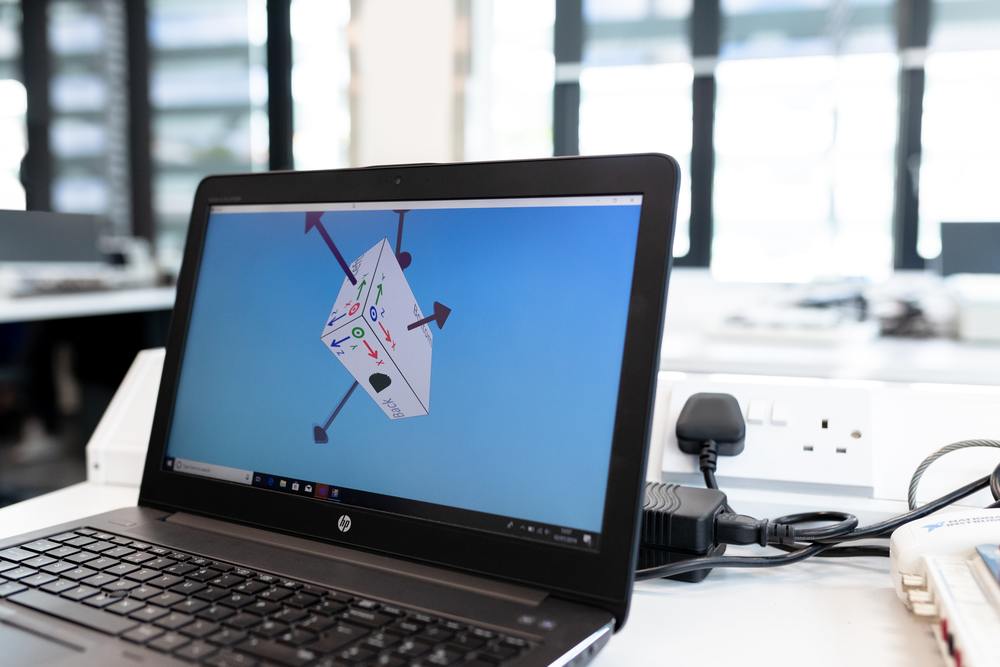Getting started
How to become an inventor in 4 steps
Thinking of developing a hardware prototype? Thinking of selling it to a company or run a crowdfunding campaign?

Photo by ThisisEngineering RAEng on Unsplash
Hardware prototype development can be time consuming and expensive so to make life easier for you, we bring you 4 easy steps to turn your idea into a product.
Step 1. Get informed
Let’s face it, we all have great ideas when we shower, wake up in the early hours or watch Netflix. So the first thing you have to do when you have a good idea, is to find out if there might be a similar proposal in the market and check if there is a specific need in case you want to market your idea.
The easiest thing to do is run a search engine scan to see if there is anything close to your idea. The second place to consult are crowdfunding platforms, and the third is to talk to people close to you, companies or professionals in that sector. Don’t be afraid to do so, but always be careful not to reveal the entirety of your idea or invention to potential competitors that you cannot trust 100%.
Don’t be discouraged, researching [patents] is actually very simple.
Once you have an understanding of your competition, it is time to investigate the feasibility of your idea from the legal and commercial aspects. So before you develop your prototype, do a little research on the previous patents. Others may have already had a similar idea in the market, but that does not mean you should not pursue your new approach to solving an old problem. By understanding your competition and patent landscape you will be better set up to design a more competitive product for your desired market.
Don’t be discouraged, researching this is actually very simple. Just visit Google Patents https://patents.google.com and check. There are also other national or international databases that you can access such as www.uspto.gov (USA), https://www.ipo.gov.uk/p-ipsum.htm (UK), https://www.epo.org (Europe), http://pericles.ipaustralia.gov.au/ols/auspat (Australia) or http://www.wipo.int/patentscope/en. Try to find the patent office for your local area or region online.
On the other hand, the best professionals recommend documenting the entire process. The best inventors and entrepreneurs always carry a notebook with them to have the entire process documented and controlled. Once Einstein was asked if he had written his good ideas in a notebook, Einstein replied, «When I have an original idea, I don’t forget it.» Sadly, we can’t all be like Einstein, right?, so this notebook has to be your bible on the go, don’t underestimate its usefulness. An «inventor’s journal» can be any notebook that has numbered pages, or you can purchase special journals online. Always remember to write a date on your pages, in order to remember when your original idea was legally born.

Photo by Nick Morrison on Unsplash
Step 2. Make a Prototype
In this second step, we ask ourselves: what is a prototype? A prototype is a real, tangible model of your invention that should be able to do all or almost all of the things that you want your final product to do.
A prototype is a real model of your invention that should be able to do all or almost all of the things that you want your final product to do.
There are several ways to develop it, but the first and easiest is to make a simple sketch of it before starting to develop your idea or entrusting the project to a third party. In this way, you can analyze and understand how the different parts of it interact and you can have a vision of how it should look. Once you have developed some basic 2D designs, you should translate that vision into a 3D model using the various CAD programs that exist in the market today. There are several free solutions on the market such as FreeCAD or Onshape depending on your prior knowledge. Read the article on All3Dp 2020 Best Free CAD Software, by Max von Übel for CAD software recommendations.
Once you have your 3D CAD design, you will have to create a model of the project with some material that allows you to make a 3D model with the necessary mechanical and electronic components: essentially a functional prototype.
And why should you develop a working prototype? The advantages of building a hardware prototype, MVP, or working prototype is that you will almost always learn something new about your idea, and come up with an improved product in the end. There are many 3D printing systems on the market, as well as PCB kits and other components that you can utilise to help you iterate in this process.

Photo by Kevin Jarrett on Unsplash
If your invention is something that will take up a lot of your time or you just don’t have the skills, you should look for other solutions like going to traditional consultancies, which usually have high variable costs that can be up to 30k or 40k USD to develop a CAD prototype. You could also hire freelancers and professionals to do it for you, but the cost and complexity to start the project still remain high. Many times they depend on more people and suppliers to carry out these complex projects.
Another option is to use LastBasic. We are an engineering marketplace for the development of hardware prototypes and mvps with a community of professional and efficient international experts. All you have to do is complete a short briefing on the website and you will immediately know if the development of your idea is feasible or not. The pricing model model does not vary during the process, being much more convenient, cheaper and faster than many traditional options. When you turn to LastBasic, our community of experts will look for areas of improvement in the original sketch idea and provide solutions during the development process.
In this way, you will have a functional prototype ready to present to investors or carry out crowdfunding campaigns, and you will also be an expert on your design and understand all the design decisions that were made to get you there.
Step 3. Patent Process
Now that you have your functional prototype or MVP of your idea ready, it’s time to consider registering it. If you plan to go to market, it is worth the investigation upfront especially if your idea is a novel one. There are two main types of patents you will have to choose from: a utility patent (for new processes and machinery) or a design patent (for producing new designs). Patent registrations in each country work differently and can be tricky if you haven’t done it before.
There are two main types of patents you will have to choose from: a utility patent or a design patent.
The best solution in this regard is to go to professionals, a lawyer or a law firm, for legal advice on the matter. You can approach online solutions like Upcounsel or visit small law firms – they are generally cheaper and will work directly with you. By the way, agree on their rates before closing any deal with them.

Photo by Victor Aznabaev on Unsplash
Step 4. Sell and Market your invention
Once you have arrived here, there is nothing that can stop you! At this point it is a good time to decide if you are going to sell your product on your own, through crowdfunding platforms, or if you are going to sell your idea to another company or investor. If you are going to commercialise your idea and / or you are looking for potential investors, the simplest thing is to make a business plan including a Go-to-Market plan (GTM).
If you are going to commercialise your idea and / or you are looking for potential investors, the simplest thing is to make a business plan […].
There are countless resources online that can help you. A good place to start is BPlans, it has several resources for the entrepreneur, as well as templates. Sometimes a simple one page business plan is the best option. At Oprah.com (yes, Oprah Winfrey’s website always has helpful resources) there are several ready-made templates for different company types. You can get ideas from these models/templates and easily adapt them to suit your future business. You can find more information about GTM strategy in this excellent articles by Nima Torabi on Medium and this one by Stefan Groschupf on Hubspot Blog.
If you choose to license your idea (sell it to a third party company), you should know that you will receive a small percentage of the sales. This can scare you as an inventor because you feel like you deserve more. However, you should consider the positive side: you will not have the financial burden associated with the business, nor the responsibility of marketing or developing marketing campaigns … And this can generate much more money in the long run. Even so, they are things that you will have to evaluate calmly.
I just have a couple of considerations to finish. First: it is important to remember that from the moment you conceive your idea until it is developed and commercialized, it can take a long time. Most inventions take between 8 and 24 months to see the light. That is why it is important to choose well at each step and select the companies that will help you save time and spend the least amount of money. Second, and the best advice I can give you: you must have enthusiasm, perseverance and patience if you embark on any project, especially these types of projects, so that your days of hard work are worth it in the end.
Getting your invention made is more affordable than ever
Our sharing economy model makes us very competitive with prices being up to 80% lower than others.
View Pricing
Getting started couldn't be easier
All you have to do is;
Select your package, complete and submit your idea brief for validation, make the payment and begin your onboarding through to a working prototype.
It's that simple!